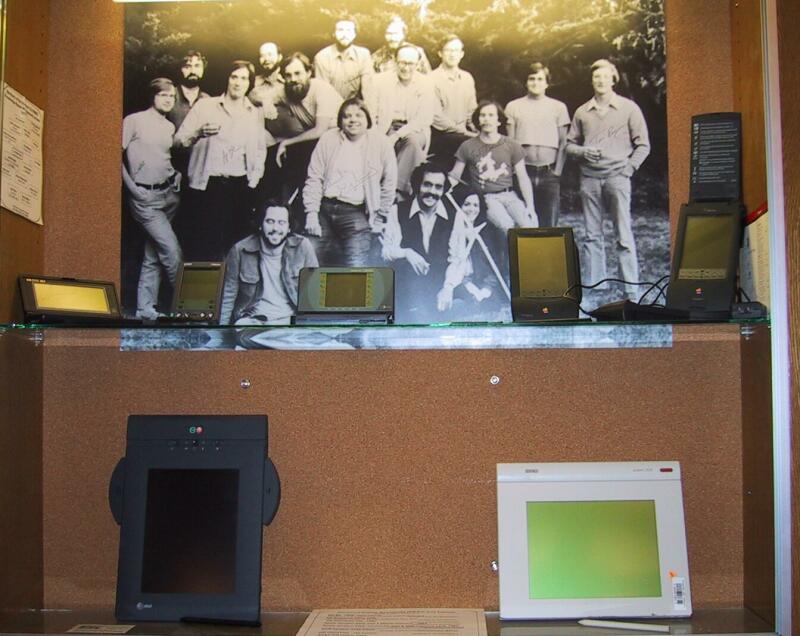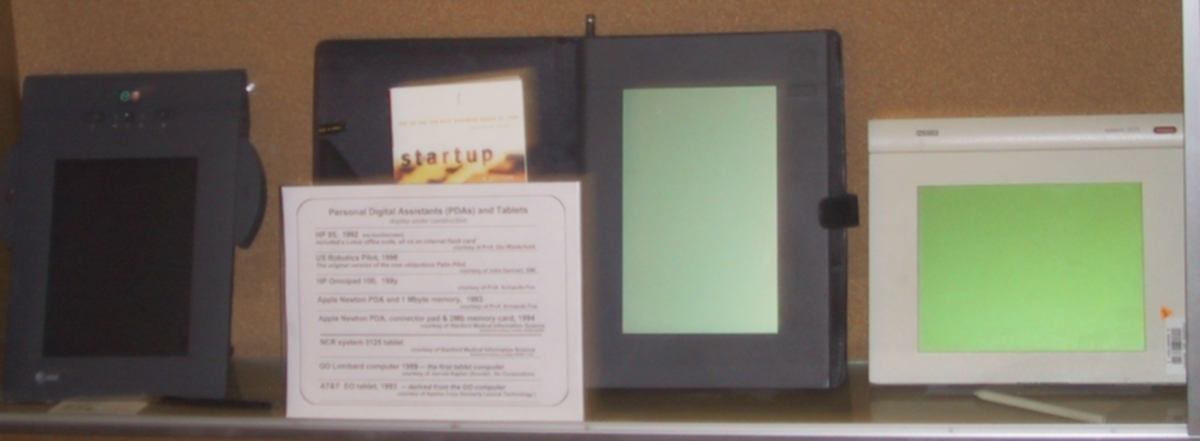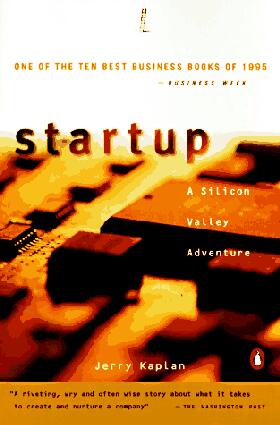Personal Digital Assistants (PDAs) Timeline
[SMI, Kaplan, Armando Fox, others]
basement back center left
Original display, without the GO tablet.
PDA Timeline Display
KBMS people (1977)
top row: Hector Garcia-Molina, Shel Finkelstein, Jim Davidson, Arthur Keller,
Norm Haas
standing: Hank Korth, Jerrold Kaplan, Jonathan King, . . . . . . Gio Wiederhold, . . ? . . , Tom Rogers,
somehow sitting : Richard Weyrauch, Earl Sacerdoti
kneeling: David Shaw, Ramez El Masri, Barbara Grosz.
[Daniel Sagalowicz took the photograph],
Note Pad sized PDAs
AT&T EOs -- GO Lombard Computer 1991 -- NCR
The AT&T EO has been provided by Apelon Corp., Alameda, CA.
The GO Lombard computer is in loan for the Gates displays from Jerrold Kaplan.
The NCR machine was donated by the Section on Medical Information Science,
courtesy of Larry Fagan.
The GO tablet was one of the first of the handwriting recognition devices.
A dedicated operating system PenPoint was included.
The product was eventually taken over by AT&T.
Jerrold Kaplan described his experiences with GO corporation in a best-selling
book Startup, A Silicon Valley Adventure; Penguin, 1996, also
on display.
An earlier effort, the 1989 Grid Computer, used a touch-sensitive pad.
E-books can be considered offsprings of these devices, but they
focus on presentation, download of copyrighted material, and only
provide for markup or annotation of the material presented.
Small PDAs
HP 90 (1991) -- US Robotics Palm Pilot -- HP 100 -- Apple Newtons (1993)
An early attempt at a pocket-sized computer, supporting Microsoft
MS-DOS, was the 1989 Poqet computer.
It was eventually manufactured by Fujitsu and sold by California Digital.
The HP 90, shown here, and its successors (95, 100, 200) also provided
only keyboard entry.
That HP series included a simplified MS-DOS operating
system, with common applications (word-processing, spreadsheet, and
calendar program) preloaded on Flash-memory cards.
More information is available on the
HP calculator museum
site. It also has descriptions of earlier calculatores.
The Apple-Newton PDAs were the first small-size message pads with
handwritten character entry apability,
supplemented with a displayed keyboard for alternate character entry.
The Palm pilot abandoned trying to read human handwriting, and required users
to scribble using predefined Graffiti. That approach was a success and
has led to the ubiquity of small PDAs. The US Robotics design was taken over
by 3COM, who eventually spun the Palm Pilot effort off into a seperate
company.
A Japanese site [by Iida Koji] focusing on PalmTop
Computers is at
http://homepage3.nifty.com/Denemon
(was http://member.nifty.ne.jp/iidakoji/palmtop.htm#top), with pictures of
Sony, Apple, 3COM,
Handspring, Cassiopea, COMPAQ, EPSON, NTT, Sharp, SII, and Royal products.
If you click on the names you get the pictures,
even if you or your browser do not comprehend Japanese characters.
The site also shows keyboard and wearable computers.
Follow-up links are also provided.








